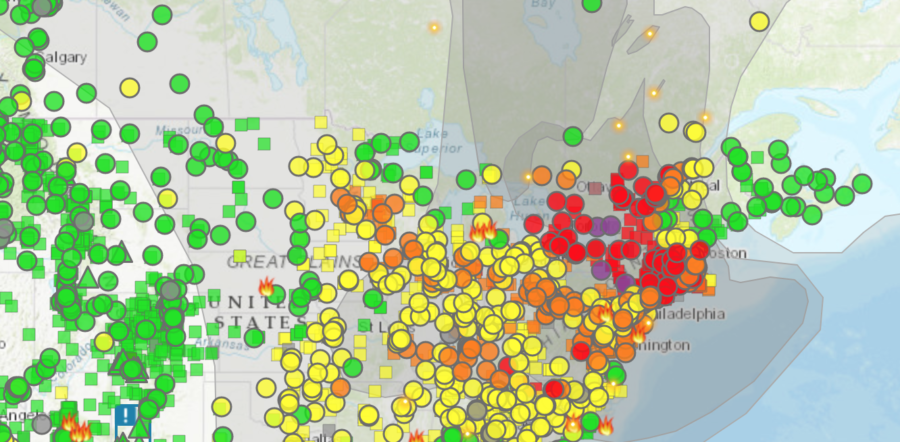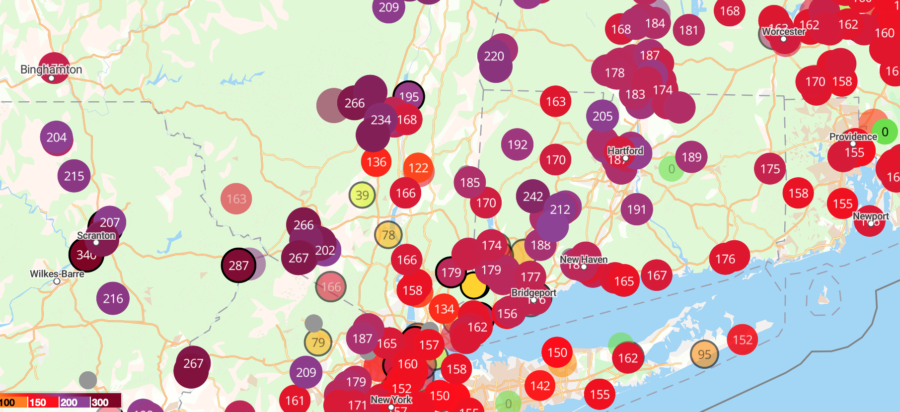After seven weeks of detailed analysis about topics as far-ranging as fire plumes, fire behavior, firebrands, and metallurgy, jurors will now determine whether the electricity provider PacifiCorp should pay out for thousands of properties destroyed after an extreme east wind event during the 2020 Labor Day fires in western Oregon. The trial started back in April and wrapped up on Wednesday, June 7 in Multnomah County Circuit Court in Portland.
KGW-8 News reported that Pacific Power attorneys said the company shouldn’t be responsible for climate change, other wildfires’ spread actually ignited fires named in the lawsuit, and power shutoffs were both rare and a last resort. Lawyers for the plaintiffs who lost homes in the fires said Pacific Power had ample warning that windstorms could generate severe fire risk, including conversations with agency officials about power line de-energization.
Plaintiffs’ attorneys also said that the wildfire investigations are inconclusive because Pacific Power destroyed evidence of downed power lines and erased internal communications about its findings; the only skype messages that Pacific Power didn’t erase were found in discovery in a folder labeled “purges.”

OPB reported that plaintiffs in the class-action case are requesting $1.6 billion in damages. They allege that PacifiCorp acted negligently by refusing to heed the extreme weather warnings and shut down its power lines. Attorneys have drawn connections between PacifiCorp’s decision to keep power on and the fires that ignited and burned across western Oregon. The Labor Day fires of 2020 burned more of the Oregon Cascades than had burned in the previous 36 years combined.

“They have no real response to any of this,” attorney Cody Berne told the jury during closing statements. He said PacifiCorp started the fires. “They destroyed the evidence. And now they have come before you and are asking not to be held accountable.”

Lawyers for those who lost their homes in the fires repeatedly asked the jury to hold the utility responsible for igniting the fires, according to the Statesman Journal. “This is a massive corporation that caused trauma to the state, destroyed entire parts of it, and they want you to find them responsible for nothing at all. They are taking no accountability — it’s unbelievable,” plaintiffs’ attorney Nicholas Rosinia told the jury on Wednesday. “They want you to say the survivors get nothing; their story doesn’t matter. Their homes and memories were erased … but to PacifiCorp that doesn’t matter.”
The full day of closing arguments wrapped up the trial in which jurors listened to testimony from witnesses and fire experts about whether PacifiCorp is liable for millions or even billions in damages after its power lines ignited the Santiam, Echo Mountain, South Obenchain, and 242 fires. Defense attorney Doug Dixon argued that the evidence showed limited reason to believe that the power lines caused the fires. PacifiCorp, which is owned by multinational corporation Berkshire Hathaway, took every reasonable precaution, Dixon said, and didn’t have the information to justify throwing entire communities into darkness during an emergency. “There’s no witness who came in and said based on the forecasts Pacific Power was receiving that it should have de-energized in this specific area of its service territory,” he said.
Jury to answer 23 questions: As the jury of 12 begin deliberations, they’ll fill out a form with 23 questions. The first and most important is whether PacifiCorp was negligent — defined as acting without reasonable care — for any or all of the fires. Jurors just check the “yes” or “no” box for all four fires.
Nine of the twelve jurors must agree for a ruling in favor of the plaintiffs, otherwise the ruling will be in favor of PacifiCorp. Additional questions ask whether PacifiCorp’s alleged negligence caused harm, and whether the utility’s actions rise to the level of gross negligence — a lack of care that demonstrates reckless disregard for the safety or lives of others. Jurors will also discuss other questions before considering economic and other damages for the 17 lead plaintiffs who lost homes or property in the fires.






 The 2022 annual report from the EU’s environmental monitoring program Copernicus shows that scientists believe the extreme heat will get even worse in southern Europe. Britain recorded summer temperatures exceeding 40°C for the first time ever in July 2022. Britain’s heatwave was only one of many; the highest temperature measured was in Portugal at 47°C.
The 2022 annual report from the EU’s environmental monitoring program Copernicus shows that scientists believe the extreme heat will get even worse in southern Europe. Britain recorded summer temperatures exceeding 40°C for the first time ever in July 2022. Britain’s heatwave was only one of many; the highest temperature measured was in Portugal at 47°C. Nova Scotia officials said the fire’s burning in Shelburne County and about 50 homes have been destroyed. Dave Rockwood with the Nova Scotia
Nova Scotia officials said the fire’s burning in Shelburne County and about 50 homes have been destroyed. Dave Rockwood with the Nova Scotia 


